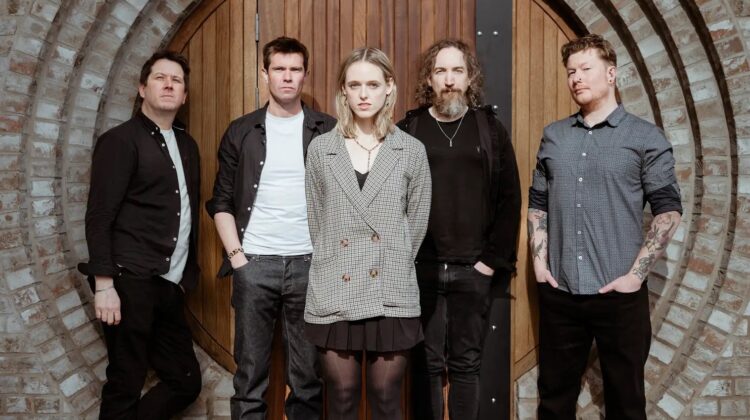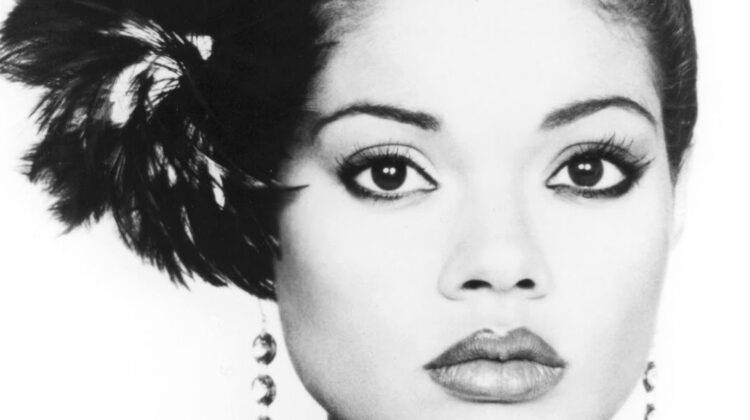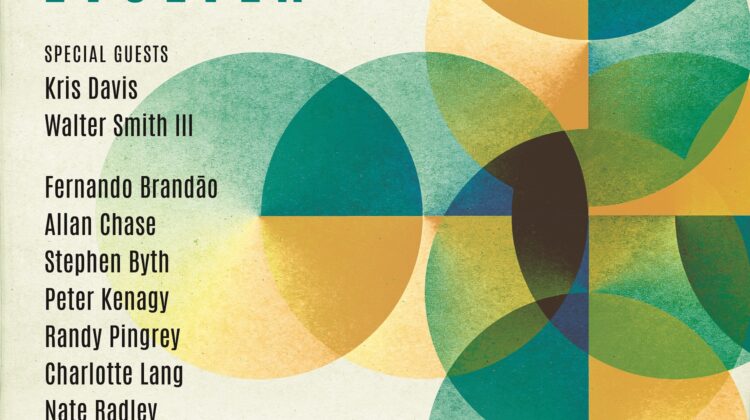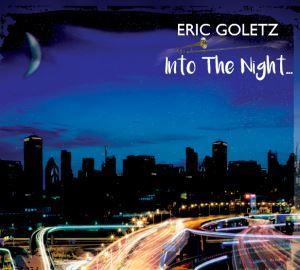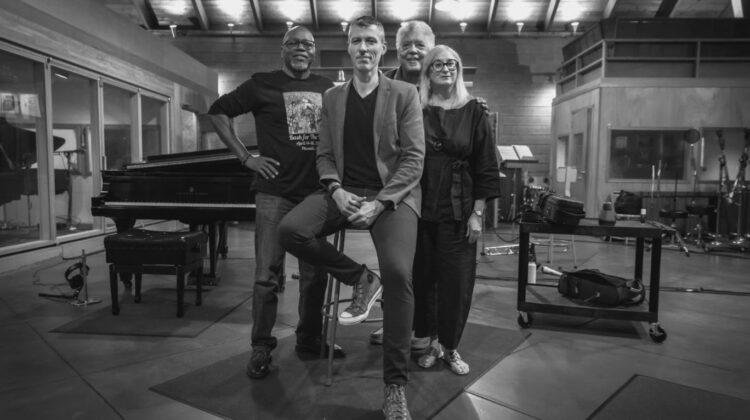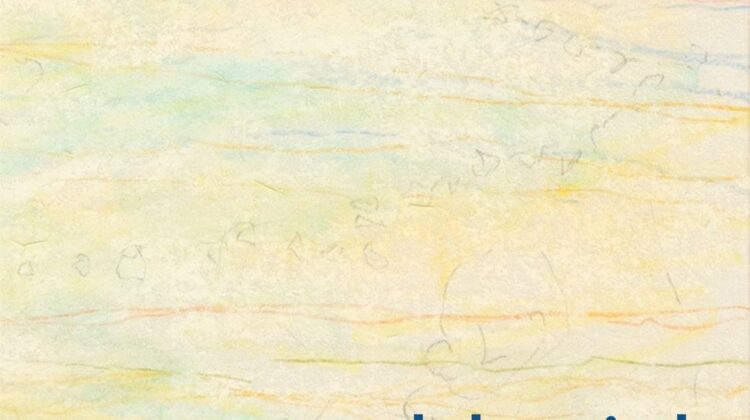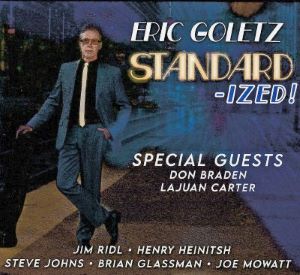You have to give Eric Goletz credit for perseverance.
And for virtuosity.
And for creating music that reaches out to listeners while providing inimitable improvisational excellence.
Goletz imagined a sound that he wanted to record in the eighties. However, the times weren’t right for him to find a producer who understood the music’s appeal that Goletz knew would take hold.
So what did he do? As if in direct challenge to the difficulties of doing so as performance opportunities evaporated, Goletz recorded those compositions, and others, 33 years later during a once-in-a-century pandemic!
The result, Into the Night, is an uplifting, joyous album. Goletz’s, and the other band members’, exhilaration in creating music is apparent, even without listeners being present to see his sextet perform.
A blend of jazz, rock, blues, big band, swing and funk, Goletz’s entirely successful mixture, in addition to his original compositions, reimagines two classics: John Coltrane’s “Mr. P.C.” and Cole Porter’s “What Is This Thing Called Love?”
However, as Goletz’s arrangements take hold, even those two classics conform to the power of his group, which in several ways is reminiscent of Maynard Ferguson’s or Buddy Rich’s. Despite those band leaders’ borrowing of elements from pop, much to the dismay of jazz purists, even so, their irrepressible command of their instruments, which helped them put their stamps on the personalities of the groups they led, can’t be denied. Ferguson played high notes with fluid and seemingly effortless improvisational skill that was his own, while Rich’s undeniable force on drums drove his big band to conform to his persona. In the process, they also became thresholds for listeners to discover jazz, thereby enlarging the genre’s audience.
Goletz, despite starting tracks with the mellowness associated with the trombone, doesn’t take long to improvise with his own formidable technique identified by incredible rapidity, on-the-mark precision and in-the-groove imagination that seem without force or artifice to arise from his personality.
The bebop trombonists, despite having to use the slide, were praised for their ability to play as fast as the jazz musicians with valved brass and reed instruments And Goletz appears to studied the beboppers’ techniques and pushed them further. His solos don’t take long to go from sustained, round tones (held to their full length) to lines of seamless 32nd and 64th notes, along with decorative elements like trills, glissandos, turns and smears, some of which fly by so quickly they could be missed.
Why hasn’t Eric Goletz received more individual attention before now?
Goletz did perform with Stan Kenton’s guitarist, Sal Salvador, as well as in pianist Mike Longo’s State of the Art Jazz Ensemble. In fact, Goletz recorded Into the Night on a label that Longo established before he passed from COVID-19 in 2020.
Goletz chose the members of his sextet to accomplish the sounds that he wanted to achieve, such as guitarist Henry Heinitsh for his rock-like solos when needed or percussionist Joe Mowatt to mix in Latin textures. In addition, Goletz arranged for the addition of five horns to augment his group with a big-band-like sound, Ferguson- or Kenton-like in its unapologetic brassiness, from trumpets to bass trombone, on “Mr. P.C.” and “”Steppin’ Out.”
Goletz starts Into the Night with “Say What??”, whose teaser of an introduction features a brief reverberated blues-in-the-night call. Then the melodic section, funky enough with pow-pow-pow-pow four-note accents between repeats, contrasts with its bridge of long tones. The rock-like beat held down by bassist Mark Hagan, drummer Steve Johns and Mowatt naturally enough leads into Heinitsh’s guitar solo combining rock technique and jazz changes. This is the jubilant music that Goletz had to hold back until now.
“Mr. P.C.” isn’t a repetition of previous versions of the composition, but rather a respectful re-interpretation entirely consistent with the rest of the album. That is, Goletz plays the first chorus backed solely by Hagan’s electric bass before offering during the second chorus another jaw-dropping solo. But then, the vamp that Goletz applies to the jazz classic, played by Hagan and bass trombonist Jonathan Greenberg, evolves into a rocking variation of the changes punched with brass accents and accompanying phrases. Pianist Mitch Schechter performs a swinging blues solo backed by Hagan’s medium-tempo walking bass lines.
The foreshadowed excitement of “What Is This Thing Called Love” is established from the beginning with Mowatt’s attention-getting percussiveness at its fast tempo, which allows Goletz to astound with his command of the trombone, first with his own high-spirited solo, and then trading fours with Schechter. After rising to a false ending, like Basie’s “April in Paris,” the group charges in again for a reprise, as if for an encore.
Another of his messages of exhilaration, Goletz’s “Steppin’ Out,” involves again the full band, which—with the percussioniveness, the backbeat, the electric guitar’s throbbing and electric piano chords—sounds like a Las Vegas show band at intermission, until…
…Until outstanding musicianship distinguishes the piece with remarkable solos of outreach to the heart.
Into the Night does include some slower pieces, like “After Hours,” whose melody Goletz, along with Heinitch this time on acoustic guitar, beautifully presents with mellifluous hues and subtly rising and falling dynamics. Goletz changes the key mid-way through the track to maintain listener interest in a track that calls attention to the sweetness of Goletz’s tone through the long notes and the fluidity of the melody.
And then there’s “Lullaby,” an acknowledgement to the fact that Goletz heard most of the music of Into the Night in dreams. Upon awaking, he wrote down the ideas of the no doubt brightly hued songs he heard while sleeping. Though Goletz starts and ends his “Lullaby” restfully enough with a calmness from Heinitsh’s acoustic guitar and Schechter’s bossa nova accompaniment, it doesn’t take long for agitation gradually to set in. A broader range of the Goletz’s trombone provides a final virtuosic improvisation upon the relatively simple theme before his last single tone fades out.
Artist’s site: jazzbeat.com/?project=eric-goletz
Label’s site: www.jazzbeat.com

